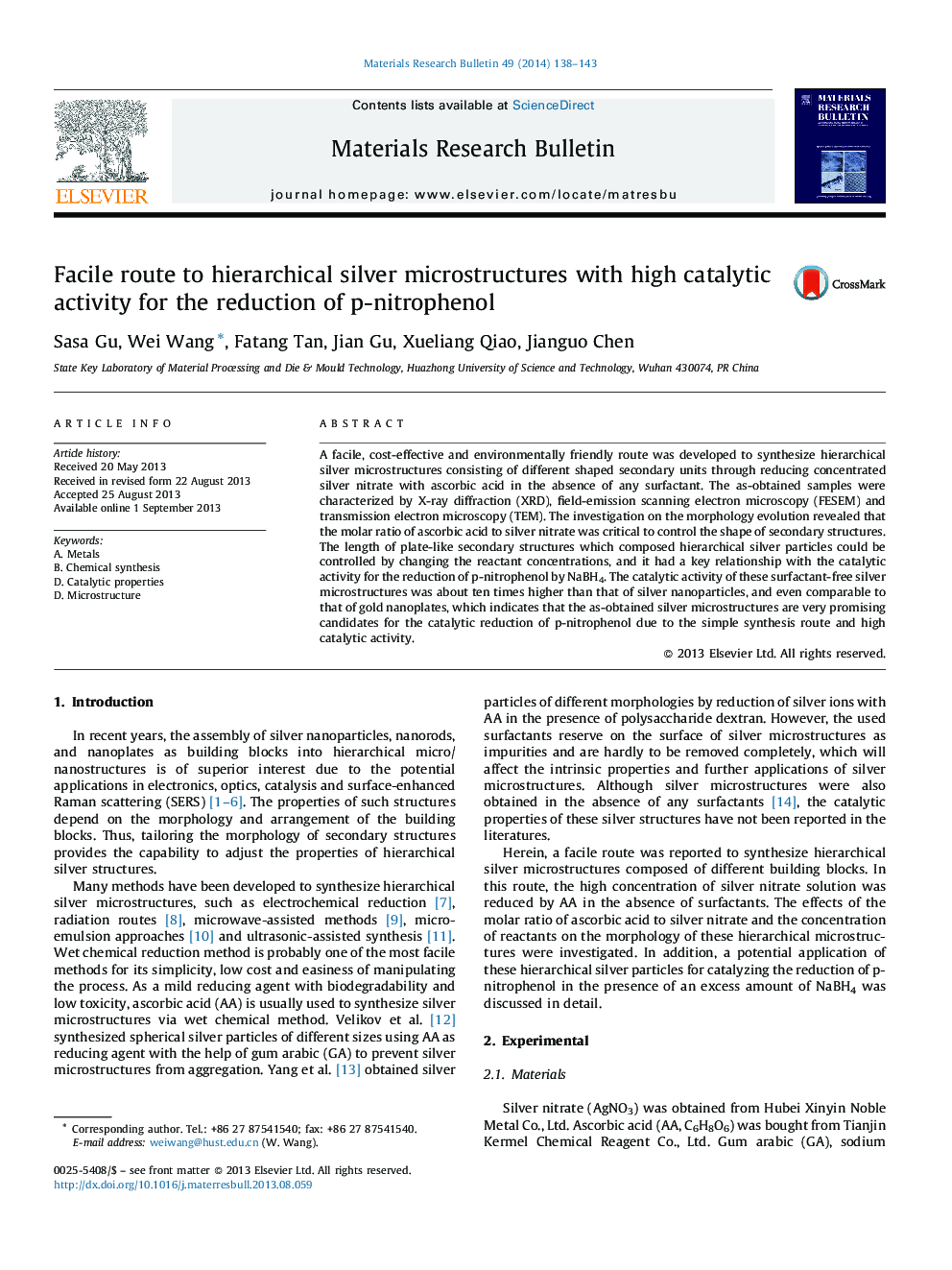| Article ID | Journal | Published Year | Pages | File Type |
|---|---|---|---|---|
| 1488593 | Materials Research Bulletin | 2014 | 6 Pages |
•A facile route was developed to prepare hierarchical silver microstructures.•The shape and size of secondary units can be tailed by varying reaction conditions.•Hierarchical silver microstructures have excellent catalytic activity.•The morphology and crystallinity of silver particles affect the catalytic activity.
A facile, cost-effective and environmentally friendly route was developed to synthesize hierarchical silver microstructures consisting of different shaped secondary units through reducing concentrated silver nitrate with ascorbic acid in the absence of any surfactant. The as-obtained samples were characterized by X-ray diffraction (XRD), field-emission scanning electron microscopy (FESEM) and transmission electron microscopy (TEM). The investigation on the morphology evolution revealed that the molar ratio of ascorbic acid to silver nitrate was critical to control the shape of secondary structures. The length of plate-like secondary structures which composed hierarchical silver particles could be controlled by changing the reactant concentrations, and it had a key relationship with the catalytic activity for the reduction of p-nitrophenol by NaBH4. The catalytic activity of these surfactant-free silver microstructures was about ten times higher than that of silver nanoparticles, and even comparable to that of gold nanoplates, which indicates that the as-obtained silver microstructures are very promising candidates for the catalytic reduction of p-nitrophenol due to the simple synthesis route and high catalytic activity.
Graphical abstractFigure optionsDownload full-size imageDownload as PowerPoint slide
